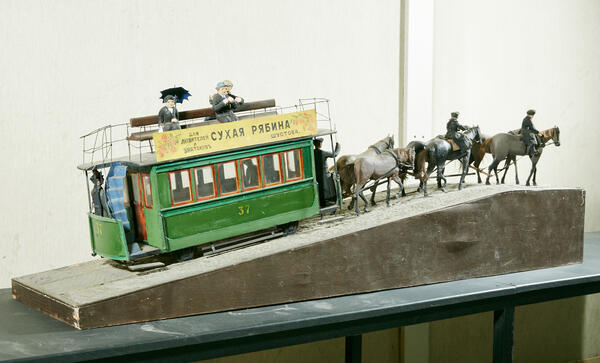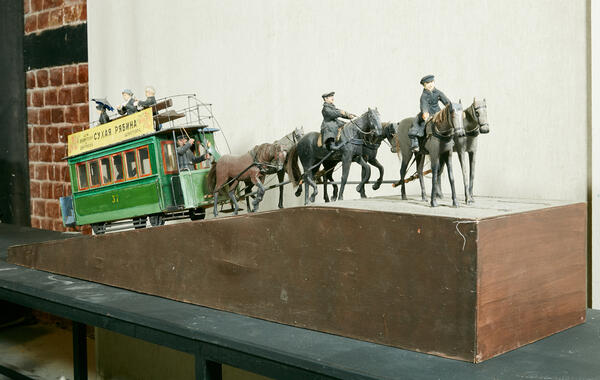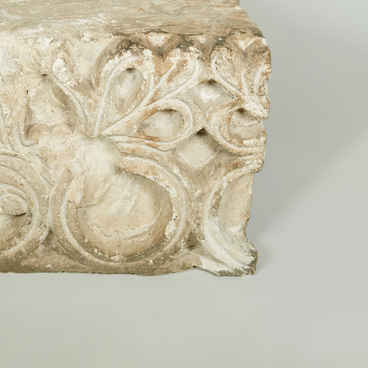The horsecar was the prototype of the electric tram. There were two types of such a vehicle: open and closed. They moved around the city on rails and were most often drawn by horses. The permanent exhibition of the Museum of Moscow presents a model of a closed horsecar.
In 1863, the first passenger horsecars pulled by two horses appeared on the streets of St. Petersburg. Horsecars appeared in Moscow nine years later. Soon, horsecars were built in all major cities and provincial centers of the Russian Empire. It was a relatively cheap form of public transport. The fare cost three kopecks for an outside seat and five kopecks for an inside one. For a city dweller of that time, these were quite reasonable prices. Ordinary people, of course, walked or rode as stowaways on the back platform until the conductor drove them away.
There were also one- and two-story horsecars. One-story horsecars were driven by one horse. Ascents weren’t easy for the horse. Two horses were harnessed to two-story cars. The second floor was called the imperial and had an open roof. Tickets to the imperial were cheaper than for the first floor — two kopecks per station, while on the lower floor the ride cost three or even five kopecks. Therefore, the seats on the first floor were considered first class, and on those on the roof — second. The floors also differed in the location of the benches: there was one double-sided bench on the upper floor, passengers sat back to back. On the lower floor of the horse-drawn carriage, benches were located along the sides of the carriage. Women were forbidden to ride upstairs, as it was believed that when climbing the stairs, petticoats could be seen, which was then considered extremely indecent. The ban was in effect for some time even after the appearance of spiral staircases, it was abolished only in 1903.
The horsecar was operated by a coachman (carriage driver) and a conductor, these positions could only be held by men. The work of the coachman required great skill, since the horses were harnessed to belt traces that were attached to a heavy roller, there were no shafts and drawbar, so even with a slight slope at the exit, the car could roll on the horses and injure them.
Horsecars began circling the city from seven to eight o’clock in the morning. Work days were relatively short due to horses getting tired — four to five hours The speed of a horsecar did not exceed 12 km/h. Therefore, electric trams in the early twentieth century quickly replaced horse-drawn ones. In Moscow, horsecars existed until 1912, in St. Petersburg — until 1917, in Minsk — until 1929.




